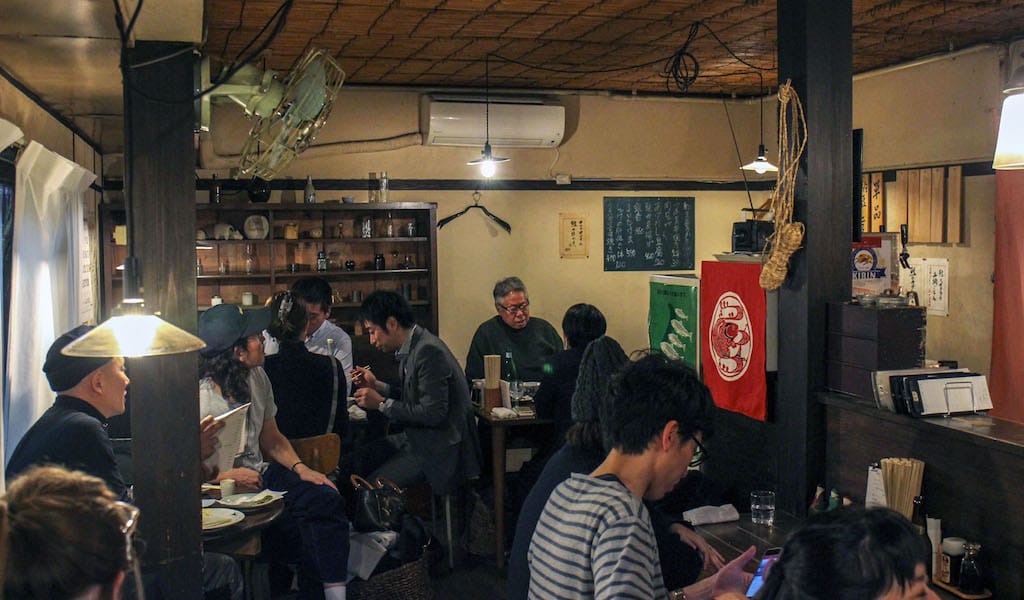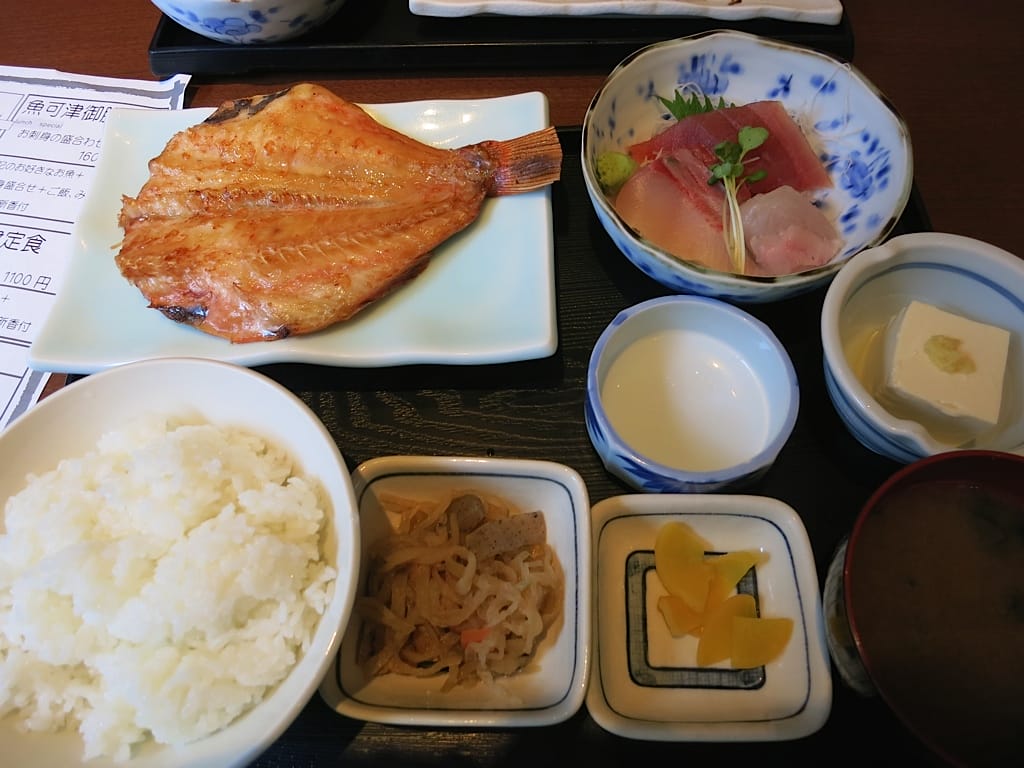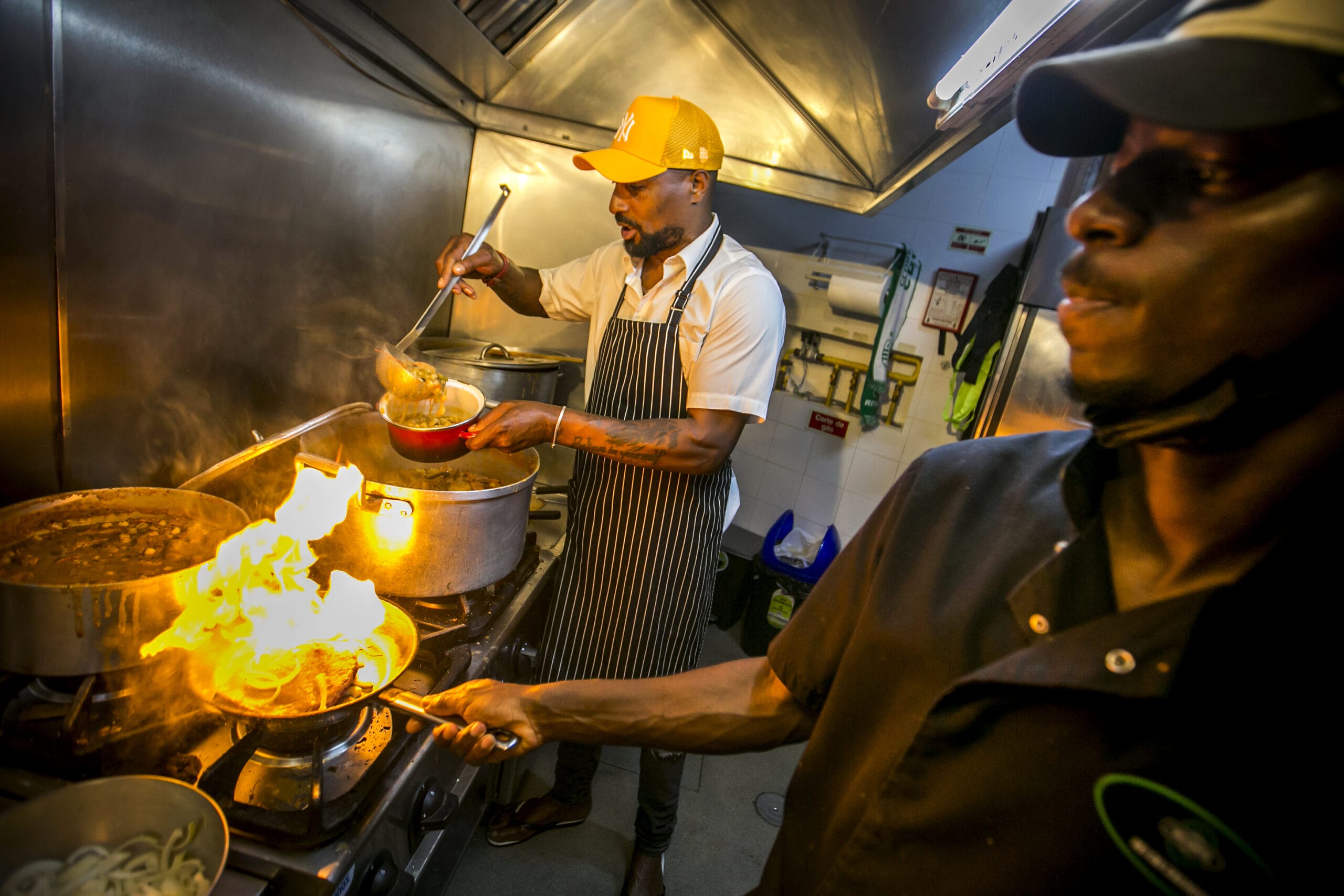As the towers of Tokyo’s Nihonbashi financial district began to proliferate and grow taller, developers took special care to preserve and in many cases not displace the area’s mainstream department stores, art galleries and varied restaurants, and so traditional establishments were often incorporated into the new buildings. The Mitsui real estate group, which opened the two Coredo Towers in 2014, made sure to include time-honored restaurants in the new setting, including an amazingly good, classic Edo-mae sushi bar lured from an outdated setting, an outpost of a Kyoto home-cooking restaurant and a dazzling array of famous sweets shops.
The developers were also clever enough to include a classic izakaya, or pub-style establishment, enticed away from the Tsukiji market. Every evening, office workers pour out of local mega-buildings and pack into Nihonbashi Suminoe to enjoy the collegial atmosphere and flavorful charcoal-cooked fish. Sakaya means a location in which to purchase sake, and “i” means to stay in a place and feel at ease. Thus, i-sakaya becomes “izakaya” when pronounced correctly, and it’s the perfect way to describe Nihonbashi Suminoe.
When we first entered, we were shown a huge assortment of sake from around Japan and the specially constructed charcoal grilling station for fish. Nihonbashi Suminoe prides itself on serving the freshest seafood and vegetables sourced from all over Japan, especially fish from waters around the southern island of Kyushu. The proprietor guarantees that your fish will have been swimming in the sea that very morning, and they are committed to running a complete sea-to-table business.
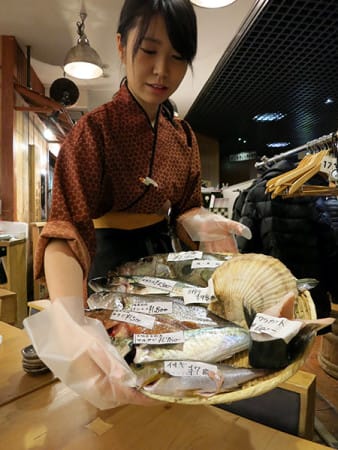 Although large and located inside a modern building, the dining area has the feel of a hole-in-the-wall drinking place, perhaps in a corrugated tin hut somewhere, which conjures up its former location inside the Tsukiji market. We were escorted to a table made to look like a fish crate in the middle of the hubbub and seated ourselves on chairs that also looked like fish crates, yet were comfy. We glanced over at the kitchen, which resembled a fish-market counter.
Although large and located inside a modern building, the dining area has the feel of a hole-in-the-wall drinking place, perhaps in a corrugated tin hut somewhere, which conjures up its former location inside the Tsukiji market. We were escorted to a table made to look like a fish crate in the middle of the hubbub and seated ourselves on chairs that also looked like fish crates, yet were comfy. We glanced over at the kitchen, which resembled a fish-market counter.
After navigating through the sake selection, we chose Dassai brand junmai daiginjo, because it is usually difficult to find, and a crisp Hakkaisan for its mellow taste, which we thought would complement the charcoal cooking. Next came the task of ordering the tidbits that would make up our meal. We ordered the simple foods first, knowing that we were expected to order the more complicated rice dishes a bit later. We discussed everyone’s wish list, since izakaya food is always eaten communally from the small dishes ordered “for the table.” (The menu, which has ample pictures of the food, makes it easy to order.)
Soon, plates of food began to arrive as they were ready from the kitchen and in no particular order. Japanese izakayas serve at least one otoshi, or free appetizer, to go with the first drinks ordered. The otoshi at Nihonbashi Suminoe is a memorable construction involving a small warming candle under a ceramic dish containing sliced squid swimming in a pungent sauce, which is made not from the fish ink, but from the liver. The waitress asked if we were okay with it and offered to replace it with something tamer, but we encouraged her to bring it on!
Our small plates included pickled purple cauliflower, followed by a heaping “Caesar salada” with baby anchovies and tomato. A dish containing a creamy dollop of sesame tofu slid onto the table, accompanied by another dish with Japanese pickles. A standout nibble was the freshest of tuna tartare, presented on a dish with wasabi horseradish and nori seaweed, to be consumed as hand rolls. The fried balls of tofu accompanied by stewed octopus were especially pungent. We were tempted to order a second helping of potato salad laced with smoked halibut, but we knew there was more to come.
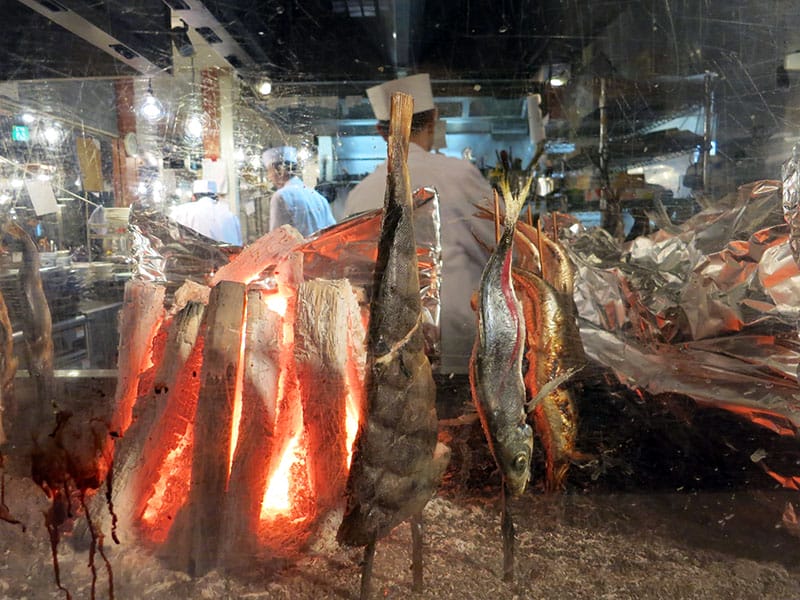
The highlight of the meal was the fish. Talk about having a price on your head! A young server visited our table with a basket of assorted fish bearing small slips of paper indicating the price of each fish. We selected a modestly priced ishimochi (white croaker) for our meal (around $15) and off it went to be skewered on bamboo and placed standing upright next to a primitive grill consisting of a mound of sumi (natural charcoal) and some heat fences, Japanese-style. The server suggested we have them grill only half the fish and prepare the other half as a superbly fresh sashimi plate, which arrived while we waited for the grilling to finish. Ishimochi is a white-fleshed, sweet-tasting fish because it swims in warmer waters, and is the perfect accompaniment to sake.
Following the fish, we ordered yaki onigiri, rice balls slowly grilled to make a crunchy outer crust over the fragrant rice underneath. An ochazuke bowl of fresh rice with fragrant nori seaweed and tea poured over the top was refreshing, yet hearty. More Japanese pickles rounded out the rice course.
A green tea panna cotta was creamy and the perfect finish to the meal. The sake was plentiful and kept coming, thanks to a waitstaff that makes sure nobody wants for anything. We were lulled immediately into the end-of-the-day atmosphere, and indeed, Nihonbashi Suminoe feels like the kind of place that could be the perfect way to end any kind of day in any city.
 March 27, 2019 Shake Kojima
March 27, 2019 Shake Kojima
“If you could eat one last thing before you die, what would it be?” one friend asked […] Posted in Tokyo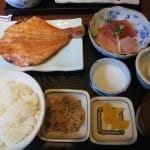 September 10, 2015 Uo-Katsu
September 10, 2015 Uo-Katsu
Before Roppongi Hills rose from the warren of rambling streets, aging wooden homes and […] Posted in Tokyo June 27, 2022 Lisbon’s Post-Colonial Feast
June 27, 2022 Lisbon’s Post-Colonial Feast
Quick Bite: On this full-day tour of central Lisbon, we’ll study the cuisines, history […] Posted in Lisbon
Published on January 18, 2016
Related stories
Journey through Tokyo’s culinary past, present and future on our walk!
March 27, 2019
Tokyo“If you could eat one last thing before you die, what would it be?” one friend asked another. His answer came quickly: “Grilled salmon skin!” It was a conversation that happened over a couple of drinks. Many would say that these kinds of discussions, alcohol-inspired brain waves, are best left as just that: ideas to…
September 10, 2015
TokyoBefore Roppongi Hills rose from the warren of rambling streets, aging wooden homes and traditional Japanese ways nestled amongst embassies and Korean barbeque joints, Azabu Juban was a sleepy section of Tokyo, moored more in custom than the flashy markets and designer boutiques to come. The main shoten gai, or shopping street, was a classic…
June 27, 2022
LisbonQuick Bite: On this full-day tour of central Lisbon, we’ll study the cuisines, history and diversity of Portugal’s former colonies. Get a taste of Cape Verdean cachupa, Brazilian pastries, Goan samosa, layered convent cake bedecked with spices and Angolan piripiri sauce and meet the people in the kitchen keeping the traditions of these communities alive.…













































